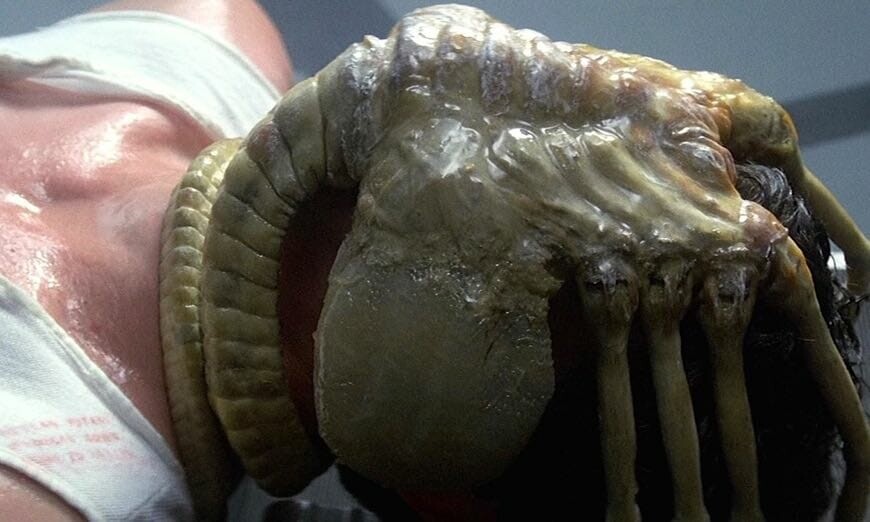4 Myths About Space We Believe Because Of Movies

Space, the final frontier that fascinates humans and makes us feel super clever when we get to fly stuff up there without it exploding spectacularly. Truly, it’s an all-round relief whenever a space shuttle doesn’t go kaboom! or kersplat! whenever it jets off into the Big Black. Because space is kind of an a-hole, you guys. It doesn’t play by Earth rules, it’s a place where everything just hurtles, and it really wants to kill us all. No wonder we love making movies about it.
Of course, as we’ve seen many, many times, Hollywood doesn’t much care for things like “exact science” and “no there is no sound in space.” Apparently, movie people think we are incapable of watching a film featuring a silent space explosion, or seeing an astronaut wearing a diaper underneath those magically untearable spacesuits. Yes, those suits can tear and break, but not in the way the movies show it.
Don't Miss
So, let’s debunk some of the movie myths about space and space exploration, shall we? To infinity, and beyond the BS.
About Those Spacesuits…
There’s quite a lot that movies play fast and loose with when it comes to those gigantic fish bowl suits astronauts need to move around in. For one, they can’t be punctured to make an astronaut fly like Iron Man through space.
An adorable idea, and Matt Damon probably had way too much fun filming it, but as former NASA astronaut Garrett Reisman explains: “Yeah, not so much …you would need a spacesuit pressurized really, really high to get enough pressure to actually get the kind of thrust that he gets. In reality, it's gonna be a tiny little gentle push. There's not gonna be a shh! It's gonna be a pew, pew, pew, pew. You know, come on.”
Reisman also notes that space helmets are made out of polycarbonate, so while they can potentially break if an astronaut takes a tumble and whacks their head on some space rock, those helmets won’t shatter like glass. So more blup! and less crack!, we guess.
One thing that’s true about the suits actors wear in the movies is that they really are that big and bulky, but that means they’re also pretty difficult to handle. NASA currently has a serious spacesuit problem, and engineers are trying to figure out the best suit that’ll not make astronauts feel like they’re wearing lazy exoskeletons that don’t even do the work. It’s because of this problem, though, that Sandra Bullock’s maneuvering in Gravity is all but impossible — specifically the part where she has to change orbit to make it to the Chinese space station.
While it’s entertaining to watch Bullock flip around in space like that (without even some kind of oxygen supply system attached to that suit), NASA planetary scientist Rick Elphic said that it’s a highly unlikely sequence of events. “It takes a lot of propulsion to change your orbit plane and your orbit altitude, and that’s just not something you’re going to have in a like what she was wearing. That part of it is not only far-fetched, but I would venture to say is impossible.”
And, of course, there’s the lack of diapers astronauts actually wear underneath their suits, that look like this:

Which would’ve been perfect for this scene, since Bullock resembles a floating fetus anyway:

Warner Bros. Pictures
About That Gravity…
While characters floating around looking clumsy in zero-gravity is enjoyable to watch — who doesn’t want to experience that?! — the way sci-fi movies portray the ol’ lack of gravity in space is not always on target. We’re not just talking about that movie where Bruce Willis and the gang land their spacecrafts on an asteroid the size of France when said asteroid would not be able to produce enough gravity to allow them to do that. Then again, we got to see Steve Buscemi hump a nuclear warhead on the surface of an asteroid, so there’s that.
Astrophysicists and Twitter’s favorite “But Actually” science guy Neil deGrasse Tyson also brought up the fact that, thanks to zero-gravity in space, there was actually no need for George Clooney to untether himself from Sandra Bullock in the opening of Gravity.
And then there’s the idea some sci-fi movies have about the ease at which astronauts can just turn on a switch to restore gravity to their spaceships. Passengers, that futuristic space/stalker movie with Jennifer Lawrence and Chris Pratt, sees Lawrence almost drowning in a pool when their fancy ship loses gravity.
The way the water reacts when all the artificial gravity on board disappears is quite accurate, but the ship won’t be able to return to its original gravitational state that fast. It would need a lot of force and some time before that water bubble bursts, meaning in a more accurate setting, that scene would have a much grimmer ending.
About Those Comets And Asteroids …
Fair, we haven’t really had a gazillion movies about asteroids and comets and their unique physics. These hurtling minor planets and gassy ice rocks have mostly only been the big impending doom that is about to annihilate our planet because, somehow, no one was able to spot them in advance. Except for Deep Impact, of all movies, that at least put their comet’s discovery timeline two years prior to the actual scene where a giant tsunami eats New York.

Paramount Pictures
Not that the movie where Téa Leoni hugs her dad while a wave the size of ten dozen Godzillas crash over them kept everything entirely accurate. The mission to go and blow up a chunk of the comet so it’d be small enough to burn out when entering Earth’s atmosphere is nothing more than wishful thinking. What is accurate, however, is that other than trying some gonzo move like that, there really isn’t much we’ll be able to do about it. The movie’s angle of “we’re pretty much doomed” is, unfortunately, accurate.
Then there are movies’ depictions of the asteroid belt, showing us a great number of asteroids all clustered together, making it difficult for any ship to navigate their way through it. In actuality, the asteroid belt is not that dense at all. It covers a huge area of space, and each rock is hundreds of thousands of kilometers apart. So while somewhere in some far away galaxy Leia and Han have to duck an asteroid field so dense it’s amazing the system hasn’t annihilated itself yet …
…our asteroid belt is best shown in The Expanse, where ships are inside the belt but mostly surrounded by dark, empty space.
About That Deep Space Travel…
Yes, we haven’t been able to travel long distances for decades and decades on end, so films like Passengers, Pandorum, Oxygen, and even Alien are allowed to flex their futuristic fiction fingers and create all kinds of workarounds for problems we don’t have any solutions for as of yet.

20th Century Studios
Cryosleep seems to be a popular study among scientists right now, as everyone tries to figure out just how humans could be sustained during long space flights, tucked away in space coffins to preserve energies (and not lose their minds of boredom, probably). Apart from trying to get the biological and physiological science right, we have another giant problem: Cosmic radiation. See, right now we have aerospace materials that can reduce deadly radiation exposure, but nothing that can truly eliminate it. This means that critical levels of exposure become more likely the longer we travel through space. Without the proper protection, cryosleep then becomes the sleep of death, and in reality, none of the passengers on their way to some far distant new-Earth planet will end up actually making it there.
On Earth, the daily radiation dose the average person gets is about 0.00001 sievert. During the Curiosity Mars rover’s 253-day deep space travel, scientists measured the exposure of space radiation, and with those numbers, they were able to calculate that an astronaut would receive a dose of around 0.66 sievert during a short Earth-Mars round trip. That kind of dosage is the equivalent of getting a full-body CT scan every five or six days. Every dose of 1 sievert increases the risk of fatal cancers by 5.5 percent
So yeah, while sci-fi movies are known to have some cool futuristic technologies that may or may not be a reality one day, it would be nice if they could at least offer up some kind of explanation as to how they made it work in their fictional worlds with luxury ships that have their own swimming pools.
Zanandi is on social media here and also here.
Thumbnail: 20th Century Studios